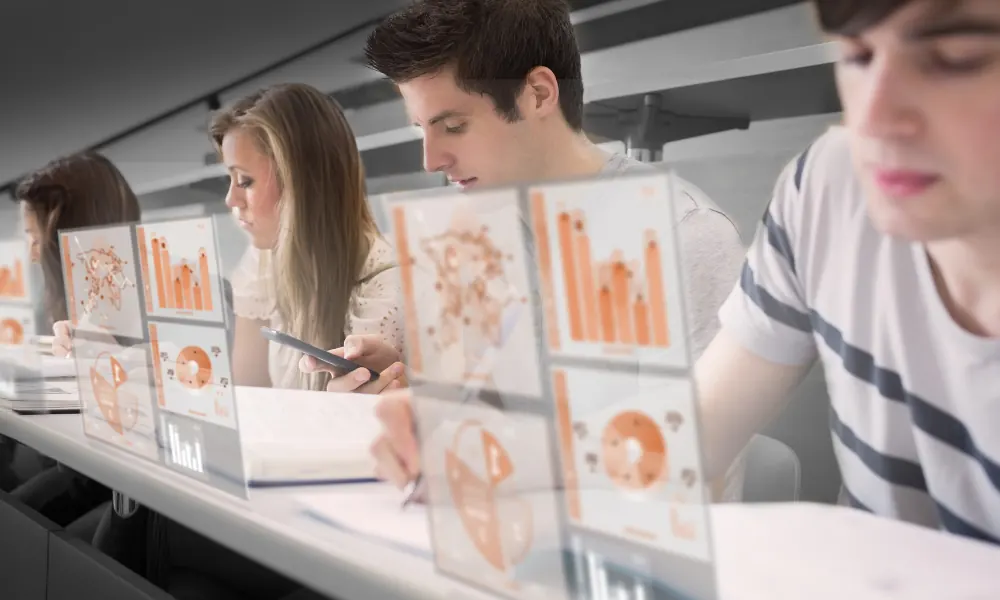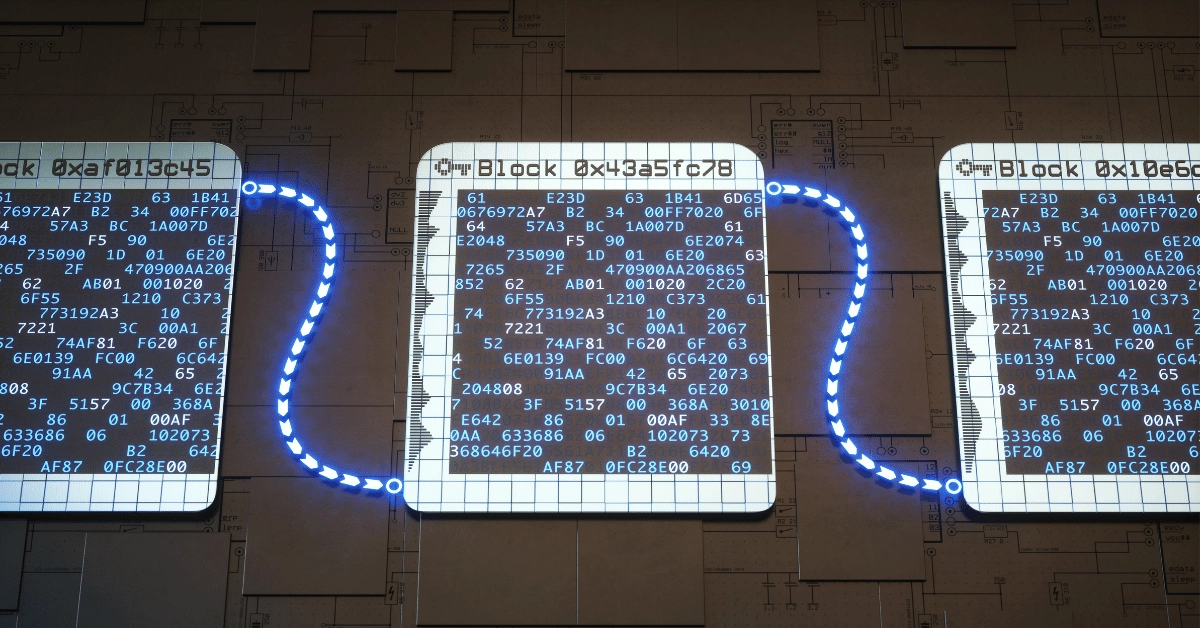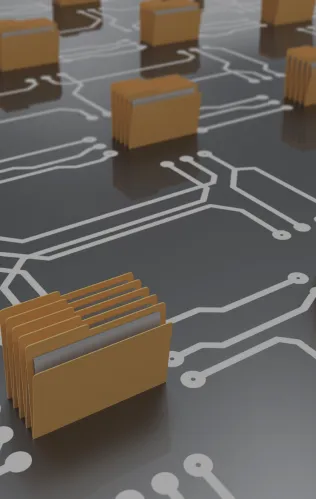What happens when you mix education with one of the revolutionary inventions of recent years?
Education is one of the key areas of focus in most developed countries. Blockchain is an emerging technology, with millions of daily users around the world. Its popularity is due to the easy applicability into everyday life into various sectors such as health and education. It can become a new infrastructure to secure, share, and verifying learning achievements. But how can this work out when you mix these two together?

Let’s get a better look at what blockchain is
Blockchain has the unique ability to provide significant opportunities to disrupt traditional services due to the distributed, decentralized nature of it. In addition, its features such as the permanence of the blockchain record, and the ability to run smart contracts made it as popular as it is today. These features, also, make blockchain technology-based products or services significantly different from previous internet-based commercial developments. This technology can be valuable for educational purposes as its functions are applicable to the sector needs.
The basic context of blockchain when it comes to education is security. Key people in the education technology field found out that this revolutionary concept (which at first was created for money transferring purposes) could benefit and bring solutions to problems that in the past would be considered, pretty much, unsolvable.
The key introduction to blockchain
As we said, blockchain is becoming more and more a part of our technological arsenal. Blockchain is a distributed ledger that keeps information in order to provide them in a community of third parties. The information can be either transactions, contracts, assets, identities or practically anything else that can be distributed in a digital form. Entries are permanent, transparent, and searchable, which makes it possible for community members to view transaction histories in their entirety. Every update is named a “block” and it is added in a “chain” of blocks (thus the name). The way that every block is being updated is monitored via a protocol explicitly created for every blockchain. The types of documents that can be transferred and be kept in a blockchain are:
- Asset transactions
- Contracts
- Certificates and documents that contain signatures
- Payment receipts
- Certifications of awards
Key advantages of mixing blockchain with education
Blockchain offers several possibilities that can benefit education in the future. Some of them are:
- Self-sovereignty: the tech revolution will allow users to become more self-sufficient. Users could more easily identify themselves while maintaining control over their data and their personal information. With blockchain, every student doesn’t need to contact the institution to have access to their data, but they can do it themselves.
- Trust: this pattern gives users the ability to keep their data safe and secure and even perform transactions between third parties with confidentiality.
- Transparency & Provenance: when the transaction is happening both ends can have either access or a general view of the process. Blockchains empower participants with information on the origins of each asset or record how its ownership has changed over time and it also provides an indisputable mechanism to verify how the data of a transaction has existed at a specific time.
- Immutability: the records that are being kept inside the blockchain cannot be altered except the main user. Immutability often equals trust and security and thus it plays a major role in why blockchains are becoming so popular. The immutability of blockchains means that it is essentially impossible for changes to be made to a record and thus it increases confidence in the integrity of the data and reduces the opportunities for fraud. For a transaction on a blockchain to be considered valid, all participants in the transaction must agree on its validity.
- Disintermediation the main point of blockchain is not having a central moderator. When blockchain and bitcoin (which is mainly the basic use that blockchain was created for) were created back in 2009, people found something they couldn’t find in bank transactions. No monitoring. This is probably why blockchain and bitcoins became so popular worldwide in such a short time.
- Collaboration through blockchain two sources can interact again without a third party being involved which makes transactions faster and easier.
The main factor that makes blockchain important to education
The main reason that makes blockchain so important when it is integrated with education, besides the aforementioned, is the ending of paper-based systems when it comes to certifications. Blockchains allow any kinds of certifications by educational institutions to be secured and thus to avoid fake documents. This can also help educators to apply rewards easily for their students as well as the transfer of credits.
In other words, blockchain gives the ability to everyone involved to automatically verify the validity of documents without further investigation. This ability can, also, easily protect any intellectual property and rights as well.
What to expect in the future?
The truth is, when it comes to this revolutionary invention that is blockchain, there are still a lot of people who still question it. Many find it too perplexed or too tech-savvy to handle.
And in general, a lot of people have their doubts and unanswered questions when it comes to it since they have seen the unstable situation that is going on right now with the financial aspect of it (e.g. Bitcoin which its value dropped significantly from 19,000$ to 7 in a few years). The sure thing is though, that the technology right now offers endless possibilities that could simplify our lives in a professional and personal level. And blockchain is certainly one of these things that are so useful that they can be considered as unproven/undertested technology because of the fact that it has been around for only 10 years or the fact that it has no monitorization by authorities.
In addition, recently a lot of institutions have adopted the MOOC (Massive Open Online Courses) in their course offerings. Over 101 million participants have registered for MOOC, and as of 2018, we have about 500 MOOC-based credentials. For instance, Udacity is comprised of approximately 50,000 paid users while Coursera experienced a user increase of 70% in 2017.
Blockchain has become a favourite in other sectors such as healthcare, we can say that the prospect of using it in education is exciting. Several industries already use it and count on it. So, it can hopefully be one of the various features of a future, smart classroom.
FAQ’s
Blockchain ensures data security by providing a decentralized, immutable ledger where student records and achievements can be securely stored and verified, reducing the risk of tampering or fraud.
Blockchain enables the creation of secure, tamper-proof digital certificates that can be easily verified by employers, academic institutions, and other relevant parties, eliminating the need for manual verification processes and reducing credential fraud.
Yes, blockchain technology can be integrated with existing educational systems and platforms, allowing for seamless interoperability and enhancing the functionality and security of these systems.




